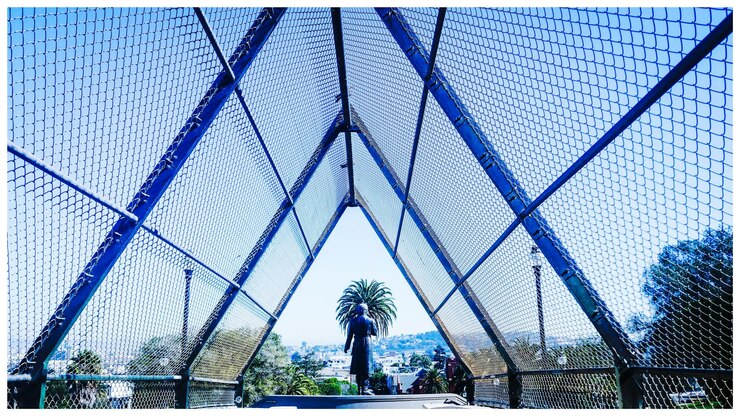In the fast-paced environment of urban living, terraces offer much-needed open spaces for relaxation, gardening, and social gatherings. However, they also come with certain safety and maintenance concerns. From preventing accidents to keeping birds and pests away, terrace nets have emerged as a practical and cost-effective solution for homeowners, apartment complexes, and commercial buildings alike.
Whether you’re protecting children and pets or simply maintaining a clean and secure environment, terrace nets serve multiple purposes. In this article, we’ll explore everything you need to know about terrace nets — their types, applications, benefits, and factors to consider before installation.
What Are Terrace Nets?
Terrace nets are high-strength mesh structures typically made from materials like nylon, polyethylene, or HDPE (high-density polyethylene). These nets are installed across open terrace spaces or balcony edges to create a barrier that ensures safety and prevents unwanted intrusion from birds or debris.
They are commonly used in:
- Residential apartments
- Independent houses
- Commercial rooftops
- Educational institutions
- Industrial buildings
Depending on the requirement, terrace nets can be customized in terms of mesh size, material strength, and installation technique.
Types of Terrace Nets
There are several types of terrace nets based on their function:
1. Bird Protection Nets
These nets are designed to prevent pigeons, crows, and other birds from nesting or entering terrace spaces. They help maintain hygiene by eliminating bird droppings, feathers, and the risk of bird-borne diseases.
2. Safety Nets
Primarily installed to prevent falls and accidents, especially in high-rise buildings. These are highly durable and often used to protect children, elderly people, and pets.
3. Anti-Monkey Nets
In areas near forest zones or with high monkey activity, these nets prevent monkeys from entering the terrace and damaging property or disturbing residents.
4. Sports Nets
Some terraces are used for recreational purposes like cricket or badminton. Sports nets help contain the play area and avoid accidents or property damage.
5. Shade Nets
While not entirely safety-focused, shade nets provide UV protection and help control temperature, making terraces more comfortable for plants or human use.
Benefits of Installing Terrace Nets
1. Enhanced Safety
One of the primary reasons for installing terrace nets is safety. They act as a barrier against accidental falls, especially for kids and pets. This is particularly important in high-rise apartments.
2. Bird Control
Birds nesting or sitting on terraces can cause a mess and spread diseases. Nets effectively deter them without harming or trapping the animals.
3. Clean and Hygienic Space
With bird droppings and debris under control, the terrace remains cleaner, reducing maintenance time and costs.
4. Protection from Stray Animals
In certain areas, stray cats, monkeys, or even dogs may access terraces. Nets prevent their entry, ensuring security for both property and people.
5. Weather Resistance
Quality terrace nets are UV-stabilized and weather-resistant, meaning they can withstand rain, sun, and dust without degrading quickly.
6. Low Maintenance
Once installed, terrace nets require minimal upkeep. Occasional cleaning or inspection ensures long-term durability.
Installation Considerations
Before installing a terrace net, consider the following:
1. Purpose
Define whether the primary need is safety, bird control, or animal protection, as this will dictate the material and mesh size.
2. Material Quality
Choose nets made from UV-resistant, non-corrosive materials like HDPE or nylon for durability and strength.
3. Professional Installation
While DIY kits are available, professional installation ensures correct anchoring, proper tension, and long-lasting performance.
4. Mesh Size
The mesh size should match the need — small meshes for birds, medium for monkeys, and large for sports purposes.
5. Removability
Some nets are designed for temporary use and can be detached or rolled up. This is useful for events or when regular access is required.
6. Cost
Prices vary depending on area coverage, material, and customization. Typically, the cost is calculated per square foot.
Who Should Consider Terrace Nets?
- Apartment Residents: Especially in cities where high-rise living is common.
- Families with Kids or Pets: To prevent falls and accidents.
- Commercial Property Owners: To maintain hygiene and avoid liabilities.
- Schools and Daycares: For child safety during outdoor activities.
- Elderly Homes and Clinics: For added safety and security.
Maintenance Tips for Terrace Nets
- Inspect Regularly: Check for any cuts, loose ends, or sagging.
- Clean Monthly: Use mild soap and water to remove dust and bird droppings.
- Tighten if Needed: Re-tighten nets if they become loose over time.
- Avoid Sharp Objects: Keep sharp tools or objects away to prevent accidental damage.
Conclusion
Terrace nets are an essential modern solution for urban homes and buildings looking to enhance safety, maintain cleanliness, and create secure outdoor spaces. From protecting children and pets to preventing bird infestation, these nets are versatile, affordable, and easy to maintain.
With customizable options and expert installation services available, investing in terrace nets not only improves safety but also adds peace of mind for homeowners. Whether you live in a busy city apartment or a serene gated community, terrace nets are a smart and proactive addition to your property.

